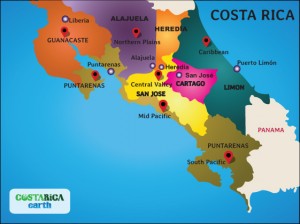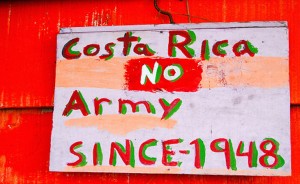Costa Rica at a Glance – Interesting Stats & Facts
In the context of memorable vacations, Costa Rica evokes images of palm-fringed beaches, sultry rainforests brimming with wildlife, and the delighted yips of zip-line adventurers as they hurl their bodies from one platform to the next. But did you know that Costa Rica is also a model of environmental stewardship and boasts a long history of pacifist policies? Read on for interesting tidbits about Costa Rica’s people, history, and culture.
Costa Rica evokes images of palm-fringed beaches, sultry rainforests brimming with wildlife, and the delighted yips of zip-line adventurers as they hurl their bodies from one platform to the next. But did you know that Costa Rica is also a model of environmental stewardship and boasts a long history of pacifist policies? Read on for interesting tidbits about Costa Rica’s people, history, and culture.
Click here and make your visit to Costa Rica special by booking a stay at our amazing villas!
The people of Costa Rica
As of 2016, the population of Costa Rica hovers just under 5 million, with the majority of residents centralized in the San Jose metro area and Central Valley. More than 95 percent of “Ticos” are of European descent, and less than 2 percent of Costa Rican residents are of indigenous ancestry, many of whom live in the country’s remote mountain regions. More than a century ago, legislators declared that education was to be mandatory and free for all citizens, accounting for today’s high literacy rate of 97 percent.
No longer a cash crop nation
Formerly a cash crop nation reliant on coffee, sugar, and bananas, Costa Rica is now a major exporter of software technology and medical instruments. The country’s growing economy is driven by tourism, electronic exports, and some agriculture, and it enjoys robust foreign investment, thanks to highly incentivized free-trade zones. Compared to its Central American neighbors, Costa Rica has a large middle class, largely comprised of working class, highly-educated professionals.
Green policies and environmental focus
In 2012, Costa Rica was rated the planet’s 5th Greenest Country by the Environmental Performance Index (EPI). This tiny nation has demonstrated what many have found inconceivable: achieving nearly 100 percent renewable energy through natural resources. A winding river system and substantial rainfall provide hydroelectric power, which accounts for 80 percent of all energy production. The remaining is made up of geothermal, solar, and biomass power. With renewable-energy targets being met, Costa Rica continues a steady path toward becoming entirely carbon neutral by 2021.
 No army since 1948
No army since 1948
You’ve probably heard (or learned first-hand) that Costa Rica is one of the most biologically diverse nations, housing an astounding variety of flora and fauna. Biologists claim that you’ll find more than 600 species of animal for each 10,000 square miles—compared to 104 in the U.S.! But did you know that Costa Rica abolished its standing army in 1948? This bold feat was ordered by then-President Jose Figueres Ferrer, who announced the country’s military spending would be directed toward education, health care, and environmental protection. Nearly 70 years later, it’s obvious that this bold decision has paid off.

 +1 888-818-2097
+1 888-818-2097
 +506 8932-4731
+506 8932-4731